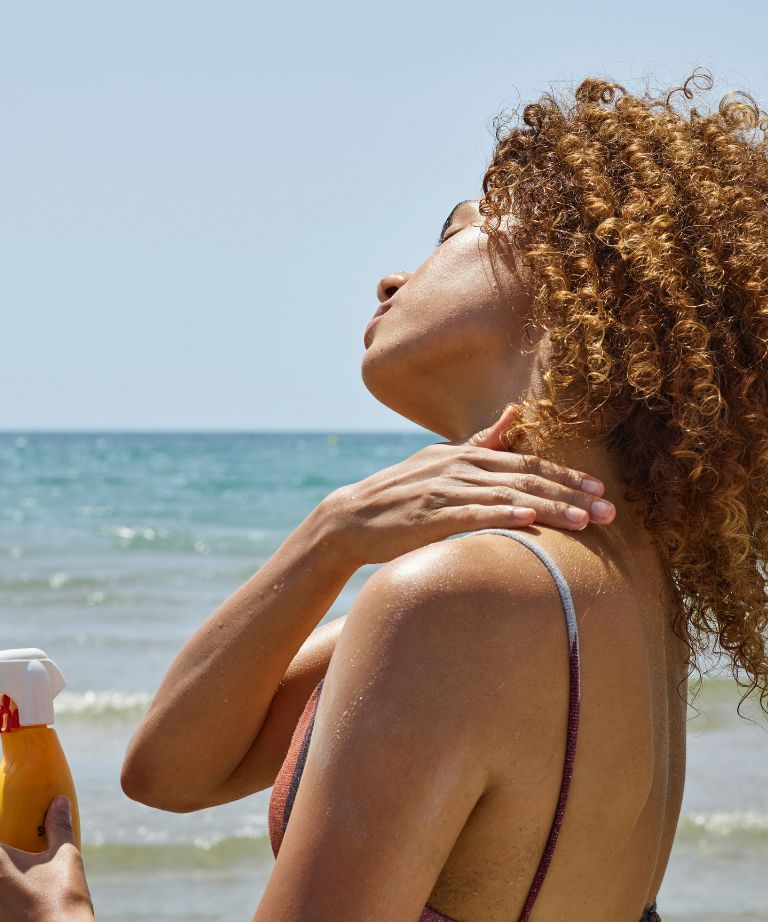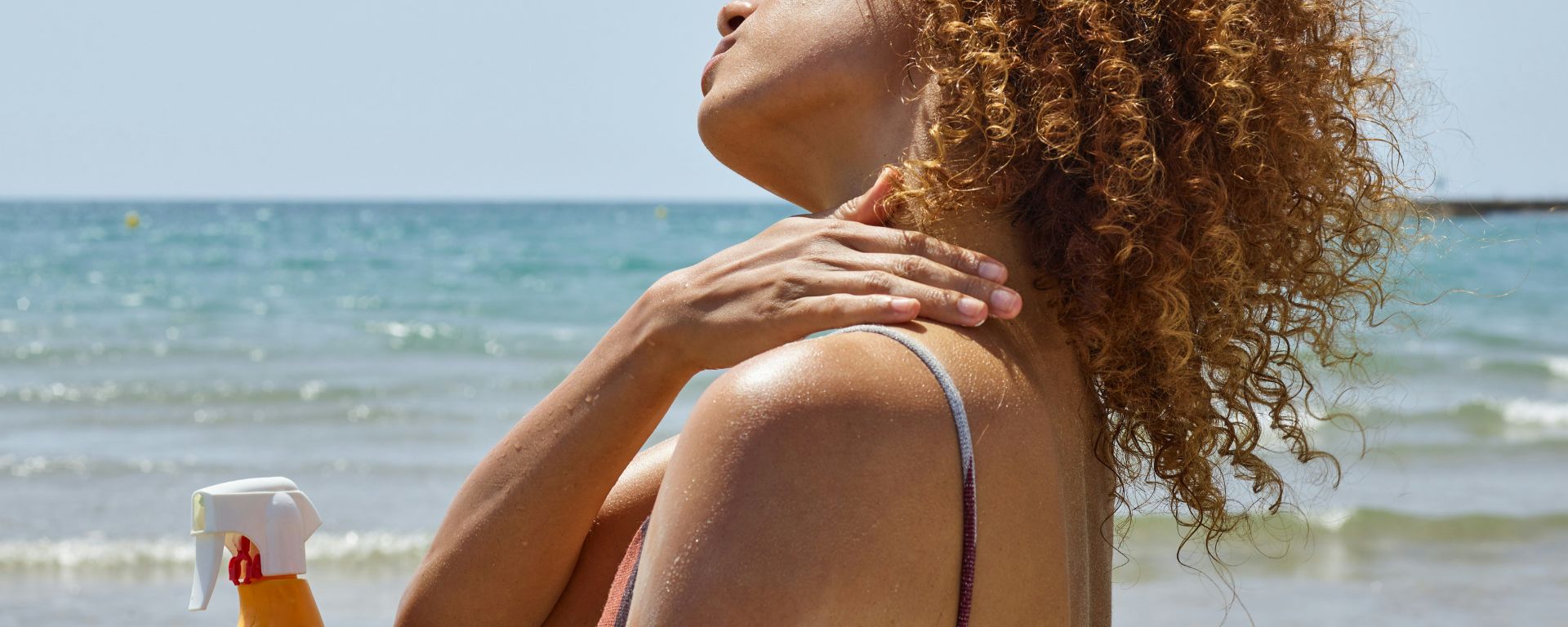

News
How long does sunscreen really last?
What to look for in sunscreen: duration, durability, and SPF
Using sunscreen correctly determines whether your skin is truly adequately protected. Many people use too little sunscreen or forget certain areas of the body—a serious mistake when it comes to skin protection.
The right amount: how much sunscreen should you apply?
Most people apply sunscreen too thinly. To actually achieve the stated sun protection factor, 2 milligrams of sunscreen should be applied per square centimeter of skin. For an adult, that means about four heaped tablespoons for the whole body. A practical rule of thumb: for each body region such as the face and neck, arms, chest, stomach, or back, a strip of sunscreen the length of your whole hand is needed. For the face, the rule is: two strands of sunscreen along the index and middle fingers.
If too little is applied, the protective effect is significantly reduced. For example, if only half the recommended amount is applied, the sun protection factor can be reduced by up to two-thirds. When applied correctly, a 200 ml bottle should be empty after about five applications to the entire body of an adult.
The right time: when should you apply sunscreen?
It is important to apply sunscreen well in advance of exposure to the sun. However, it is not true that sunscreen must be applied 20 to 30 minutes before exposure to the sun. Sunscreen products generally offer protection immediately after application. The protective film forms as soon as the sunscreen has dried. This can take a few minutes, but there is no set time frame. It is particularly important that the sunscreen has dried properly before going into the water. The skin should also be dry and clean before applying sunscreen. Dirt and residual moisture can negatively affect the distribution of sunscreen on the skin and thus have an impact on the optimal formation of the protective film. This can be a particular problem when water-free products such as clear sprays are applied to damp skin.
The right interval: how often should you reapply sunscreen?
Apply sunscreen once and stay protected all day? Unfortunately, it's not that simple. To ensure adequate sun protection, it is essential to reapply sunscreen throughout the day, as its protective effect diminishes mainly through mechanical abrasion (e.g., friction from clothing or towels), sweating, or swimming.
It is important to note that reapplying sunscreen does not extend sun protection, but maintains it. This is precisely why it is necessary to reapply sunscreen every one to two hours.
You should reapply sunscreen especially after swimming or heavy sweating. Even sunscreens labeled as “waterproof” lose their protective effect after a certain amount of time in the water. In order to make such a claim on the product, manufacturers must prove, using a defined method, that at least 50% of the advertised sun protection factor is still present after a total of 40 minutes in the water. However, it is still advisable to reapply sunscreen in good time after swimming.
Areas that are often forgotten are the back, feet, hands, neck, and the backs of the arms—these account for 9-13% of the total body surface area. Men in particular neglect around 22% of their skin surface when applying sunscreen. The Swiss Cancer League therefore recommends applying a generous amount of sunscreen twice in succession at 15-minute intervals to protect even forgotten areas.
What sun protection factor should sunscreen have?
The sun protection factor (SPF) on sunscreen is a key factor in determining protection against skin damage. It indicates how much longer you can theoretically expose yourself to the sun with sunscreen without getting sunburned, compared to your individual protection time.
Sun protection factors are divided into four levels of protection:
- SPF 6–10: basic protection level
- SPF 15–20: medium protection level
- SPF 30–50: high protection level
- SPF 50+: very high protection level
Important to understand: The SPF mainly refers to protection against UVB radiation, which is largely responsible for sunburn – however, UVA radiation also contributes to this to some extent. UVA rays also penetrate much deeper into the skin, where they can accelerate collagen breakdown, for example, and thus promote premature skin aging. For this reason, since 2006, sunscreens in Europe must also protect against UVA radiation, with the UVA protection factor having to be at least one-third of the stated SPF. This level of protection is indicated by the UVA logo on the packaging.
Choosing the right SPF depends on several factors:
Skin type: People with lighter skin need a higher SPF (30-50+), while a lower factor (SPF 10-20) may be sufficient for darker skin types.
Sun intensity: In particularly sunny environments such as at the beach, in the water, or in the mountains, a higher SPF (50+) should be used.
Duration of exposure: The longer the planned exposure to the sun, the higher the SPF should be.
The theoretical protection time can be calculated as follows: Natural protection time × SPF = maximum sun exposure time in minutes. For example, if someone has a natural protection time of 10 minutes and uses SPF 30, the theoretical protection time is 300 minutes.
However, the Federal Office for Radiation Protection recommends spending no more than 60% of this calculated time in the sun. Furthermore, even the highest SPF does not offer complete protection – even with SPF 50+, approximately 2% of UV rays still reach and penetrate the skin.
Shelf life of sunscreen: How long does sunscreen last?
The question of sunscreen shelf life is one that concerns many people—and for good reason. Expired sunscreen may no longer offer full protection against harmful UV rays.
Unopened sunscreen products generally have a shelf life of three years. This is often indicated on the product in the form of a best-before date. However, many packages also feature the symbol of an open jar with a number and the letter M (for month), which indicates how long the product can be kept after opening. For sunscreen, this period is usually between 6 and 12 months.
How long a sunscreen product can actually be kept after opening depends on various factors. One important point is proper storage. Sunscreens and other sun protection products should always be stored in a cool, dry place—this also applies to unopened products. Direct sunlight and high temperatures can affect the stability of the formula and negatively impact the UV protection effect. Therefore, sun protection products should never be left in the car or in direct sunlight.
Once opened, oxygen and moisture from the air also come into contact with the product. This can also have a negative impact on the stability of the formula.
Signs that sunscreen has expired include changes in smell, color, or consistency. If the cream smells strong or its texture has changed, it should be discarded.
FAQs
For optimal protection, adults should use about four heaped tablespoons of sunscreen for the entire body. For each body region, a strip of sunscreen the length of the entire hand is recommended.
Sunscreen should always be applied to dry, clean skin well before exposure to the sun. Depending on the product form, it may be advisable to wait a few minutes until the formulation has dried and formed its optimal protective film. However, even immediately after application, a certain basic level of protection is already in place.
It is recommended to reapply sunscreen every one to two hours, especially after swimming, sweating, or drying off. It is important to note that reapplying sunscreen does not extend its protection, but only maintains it.
The choice of sun protection factor depends on skin type, sun intensity, and the planned duration of exposure to the sun. Lighter skin types generally require a higher SPF (30-50+), while darker skin types may only need a lower factor (SPF 10-20). The UV index can also provide important guidance, as it indicates the intensity of UV radiation. The higher the UV index, the stronger the UV radiation from which the skin must be protected (a UV index of 5 is considered moderate radiation, at which point it is already advisable to wear sunscreen).
Unopened sunscreen usually has a shelf life of three years. Once opened, it should be used within 6 to 12 months, as often indicated by the symbol on the packaging. If there are any changes in smell, color, or consistency, the cream should be discarded.
Whether last year's sunscreen can still be used depends, among other things, on how long the sunscreen can be kept after opening. With a shelf life of 12 months, sunscreen that was opened in September last year can theoretically be used again. However, proper storage of the sunscreen also plays an important role. It is important to look out for signs of change (smell, color, consistency) – if in doubt, it is better to buy new sunscreen rather than risk inadequate sun protection.